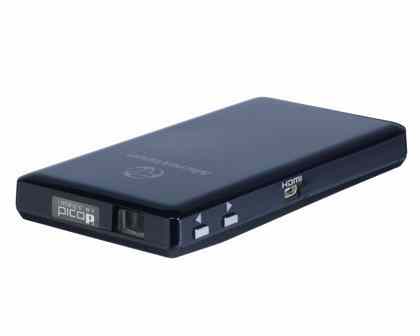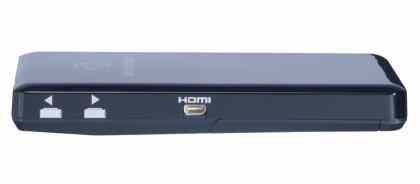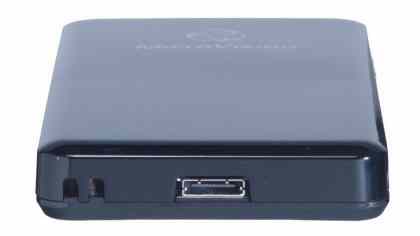August 02,2022
Microvision Showwx+ HDMI review
by Jennifer Cameron inMediterranean Style
The Microvision Showwx+ HDMI is a pico projector that uses lasers, rather than the LCOS (Liquid Crystal On Silicon) technology we've seen previously in products such as 3M's PocketProjector MP180 (see What's New, Shopper 284). Laser projectors use three different lasers for the red, green and blue components of the image, each of which can control the brightness and colour intensity of the beam. A lens combines these into a single beam, which is then directed onto a moveable mirror which projects the laser out of the lens to produce an image line by line, rather like the beam in a CRT display.

It's a tiny device the size of a large smartphone and weighs only 117g, and yet it can project an image up to 100in diagonal. Its battery lasts for two hours and recharges via USB, so it's ideal as a travelling companion for business trips.
As well as being small, the MP180 is also quite easy to use. There are only three ports - one USB port for charging, a mini-HDMI output and a proprietary port for attaching to an Apple device such as an iPhone or iPad. It comes with a cable for the latter, a composite video adaptor and a mini-HDMI cable. You can also buy a VGA adaptor for £30, which also includes a clamp with rubber feet for added stability, which is a good idea as the Showwx+ HDMI's low weight means that a cable's weight or stiffness can drag it out of position. The controls are simple too: along with the power button, there's a menu button and two arrow buttons for selecting items.

We tested the Showwx+ HDMI with our Sony Ericsson Xperia Arc S smartphone, and also plugged in a laptop to test games, presentations and film quality - everything worked as soon as we plugged it in. However, it's worth adjusting the colour balance the first time you use the projector, and although Microvision says there's no need to focus, there's an Image Alignment option that you can adjust if the picture is fuzzy.

We found the Showwx+ HDMI had problems with the colour balance between green and magenta, but this can be minimised by using the dedicated options in the menu. We found the Auto option did a good job, but you can also adjust it manually. The menu also lets you tweak colour, brightness and gamma. We see no reason to reduce brightness from its maximum setting unless you're projecting at close distance with the lights off, and the Brilliant colour mode helped to make up for lost detail with the lights on, although Standard mode gave us more accurate colours.
